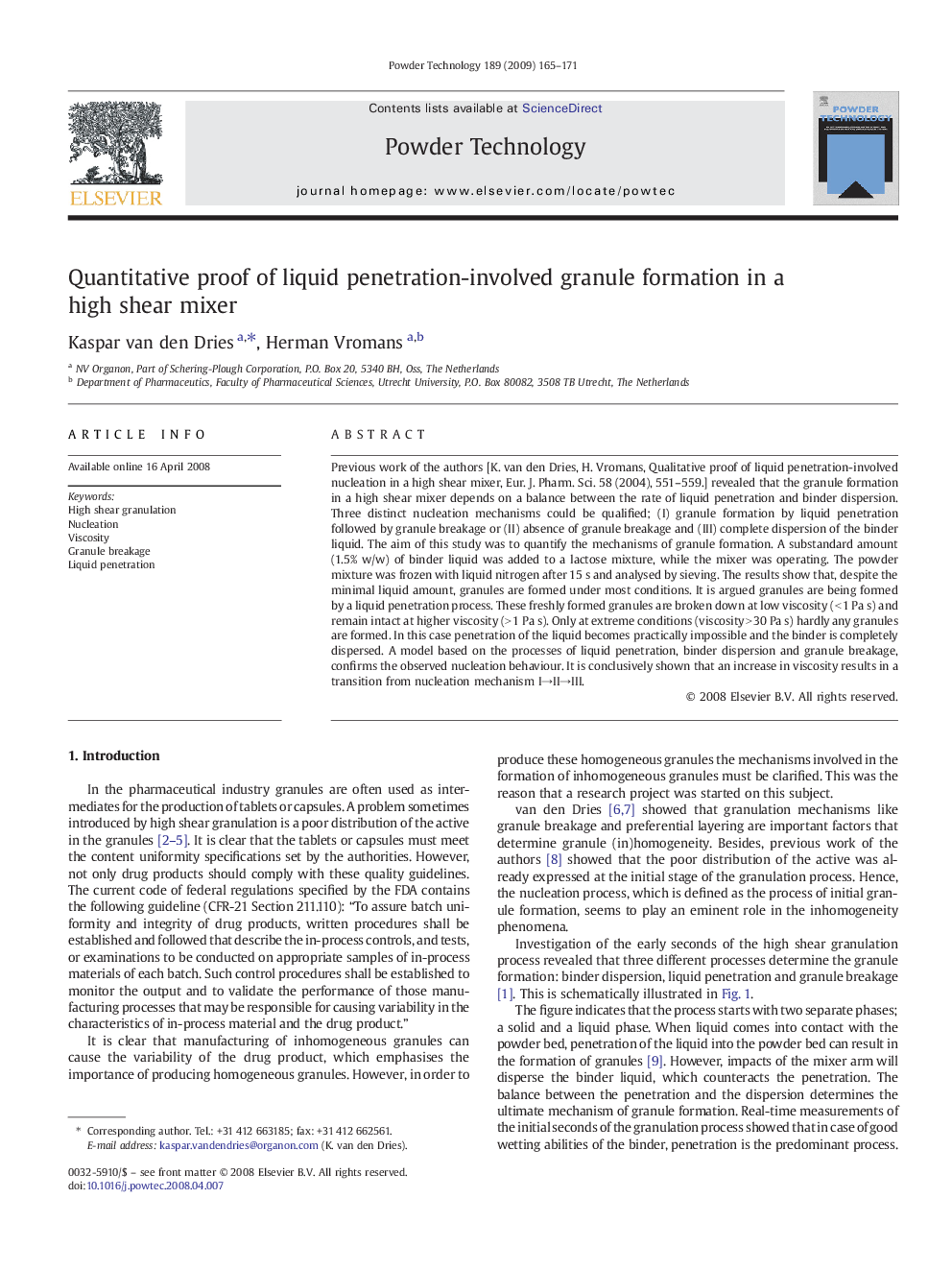| Article ID | Journal | Published Year | Pages | File Type |
|---|---|---|---|---|
| 238486 | Powder Technology | 2009 | 7 Pages |
Previous work of the authors [K. van den Dries, H. Vromans, Qualitative proof of liquid penetration-involved nucleation in a high shear mixer, Eur. J. Pharm. Sci. 58 (2004), 551–559.] revealed that the granule formation in a high shear mixer depends on a balance between the rate of liquid penetration and binder dispersion. Three distinct nucleation mechanisms could be qualified; (I) granule formation by liquid penetration followed by granule breakage or (II) absence of granule breakage and (III) complete dispersion of the binder liquid. The aim of this study was to quantify the mechanisms of granule formation. A substandard amount (1.5% w/w) of binder liquid was added to a lactose mixture, while the mixer was operating. The powder mixture was frozen with liquid nitrogen after 15 s and analysed by sieving. The results show that, despite the minimal liquid amount, granules are formed under most conditions. It is argued granules are being formed by a liquid penetration process. These freshly formed granules are broken down at low viscosity (< 1 Pa s) and remain intact at higher viscosity (> 1 Pa s). Only at extreme conditions (viscosity > 30 Pa s) hardly any granules are formed. In this case penetration of the liquid becomes practically impossible and the binder is completely dispersed. A model based on the processes of liquid penetration, binder dispersion and granule breakage, confirms the observed nucleation behaviour. It is conclusively shown that an increase in viscosity results in a transition from nucleation mechanism I→II→III.
Graphical abstractIn this paper the influence of various parameters, such as viscosity, on the granule size distribution is explained through a quantitative description of the nucleation behaviour. This behaviour can be described by two rate processes, namely binder dispersion and liquid penetration. In many cases the binder dispersion is the rate limiting step explaining the observed nucleation mechanisms in high shear granulation.Figure optionsDownload full-size imageDownload as PowerPoint slide
